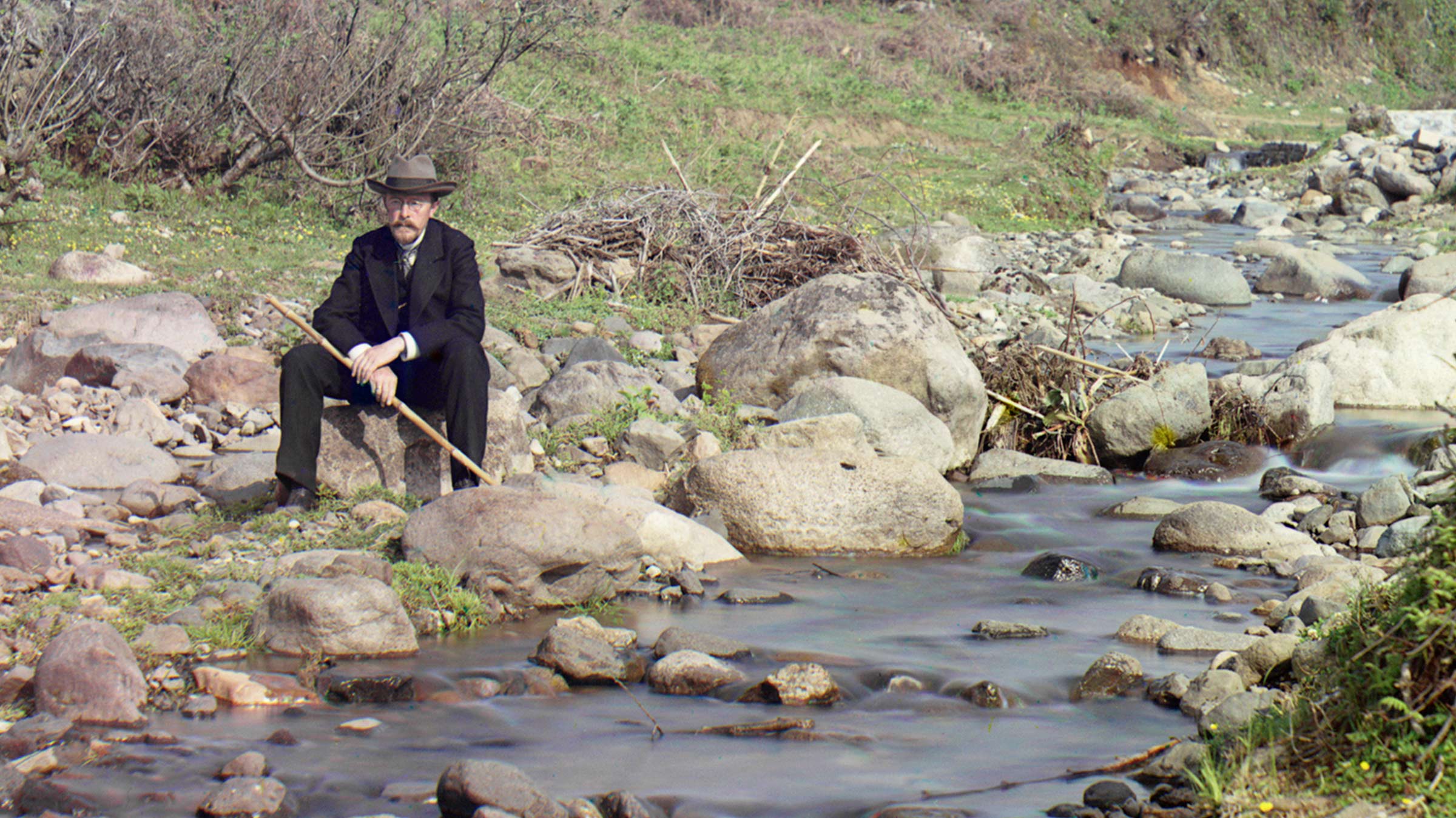Google celebrates the 155th birthday of Sergey Prokudin-Gorsky, the Russian photographer and chemist who documented the Russian Empire.
Why is Google paying tribute to Russian photographer and chemist Sergey Prokudin-Gorsky today with a doodle in selected countries like Russia, China and Peru? The cultural output of the Russian Empire’s final years may be cemented in our collective psyche through ballet, opera, and painting—but it’s thanks to this polymath that we have a visual understanding of the latter years of the third-largest empire to ever exist. Today marks his 155th birthday.
A chemist by trade, Prokudin-Gorsky was a color photographer before his time, devoted his life to advancing the practice and later going on to become a social activist. Flitting between trades, Prokudin-Gorsky was a true polymath. Studying both chemistry and art, he blended the two practices together to advance the techniques behind color photography. But it was two consecutive trips–traveling across the empire with a camera obscura and darkroom fitted out in a specially designed car provided by the Ministry of Transportation–that has cemented Prokudin-Gorsky in the pages of history.
At the turn of the 20th century, Russia was on the brink of drastic change. Lasting nearly two centuries, before the Bolshevik Revolution changed the country’s landscape forever, in the final waning years of the empire Prokudin-Gorsky collected more than 10,000 images —detailing everyday life the near 200 million people who live under the ruling of the last Tsar Nicholas II. From 1907 to 1915 he documented everything from rural Russian monasteries, to Greek farmers in the fields of Georgia and the rapid modernization that lead up to the revolution, Prokudin-Gorsky’s collection of stark, revealing images shed a light on the sheer diversity of life under the Russian monarchy.
But outside of his pivotal collection, not that much has been verified about his formative years or his route into photography. It’s known that he attended lectures at the physics and mathematics faculty of St. Petersburg University for two years during 1886-1888. At the end of that year, he jumped ship and enrolled in the Imperial Military Medical Academy, but didn’t graduate. Outside of his work documenting everyday life in the Russian Empire, one of Prokudin-Gorsky’s legacy images is his portrait of Leo Tolstoy—the only original color image in existence.
In 1889 he went to Berlin to study photochemistry at the Technical University of Berlin, where he focused on advancing color dyes in photography—particularly the three-color technique. Other outlets have reported he studied music and painting at the Imperial Academy of Arts, but the claims have yet to be verified. Then in 1870, he married the scientist Anna Alexandrovna Lavrova, a member of the Imperial Russian Technical Society, and went on to own his own photography studio, housing Lavrova, and their four children.
His last assignment undertaking photographic account of the Russian Empire for Tsar Nicholas II, was at the latter half of World War I, where Prokudin-Gorsky went to cover the construction of the Murmansk Railway, built as a supply link between Russia and its French and British allies. Later in life, he became a member of the oldest photographic society, the photography section of the IRTS, presenting papers and lectures from Russia on the science of photography.
But then in 1918, Prokudin-Gorsky was forced to flee the country and sought solace in France, when he stayed until his death. By then the Tsar had been killed, and the majority of the photographer’s work was destroyed as a one of the most violent chapter in Russia’s history opened up. Later in life, he ended up showing his images of the empire to young Russians across France, but retired from image making. He died in Paris on September 27, 1944, and is buried in the Russian cemetery of Sainte-Geneviève-des-Bois. What happened to the remaining outside of a limited collection held by the Library of Congress is unknown.







